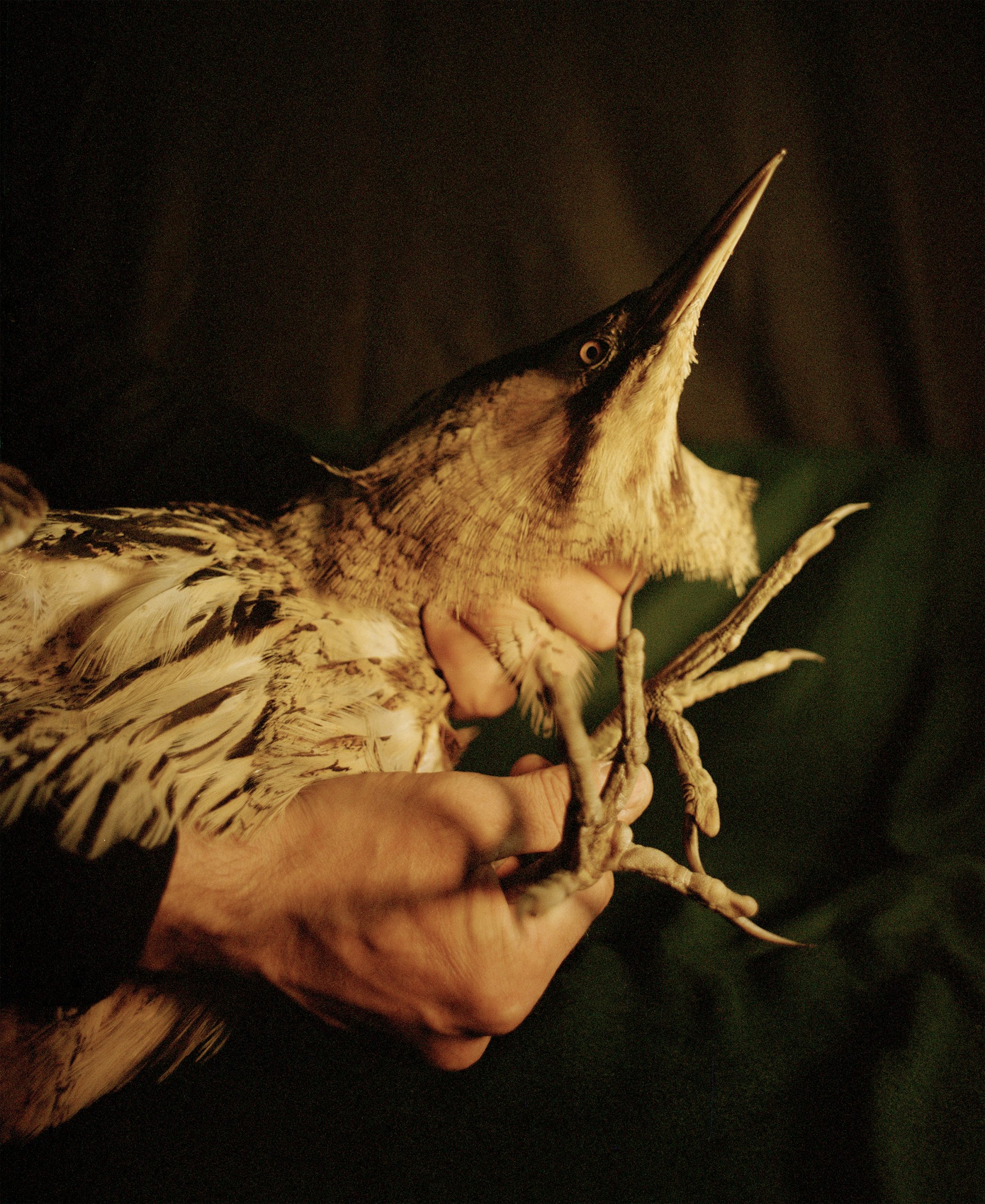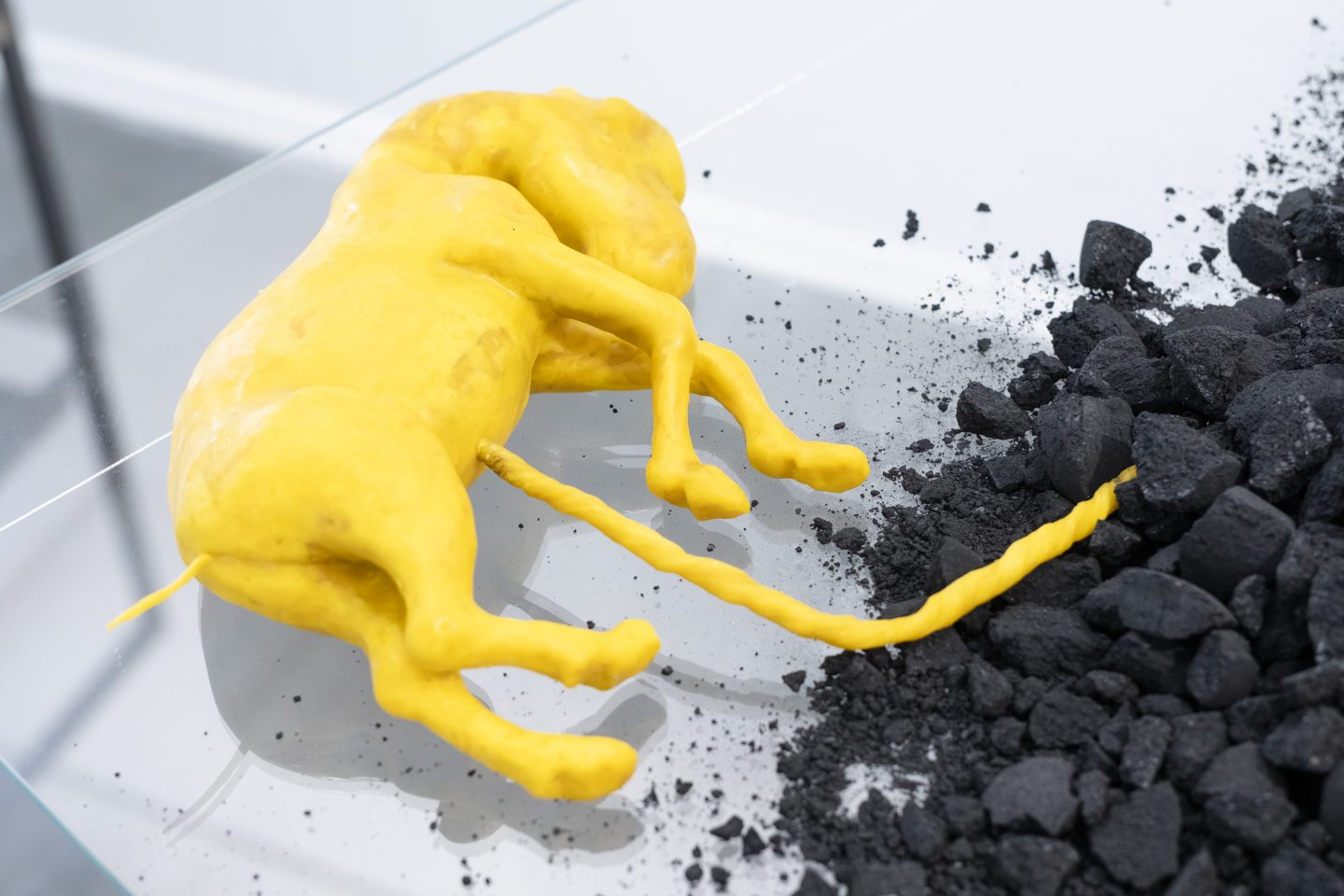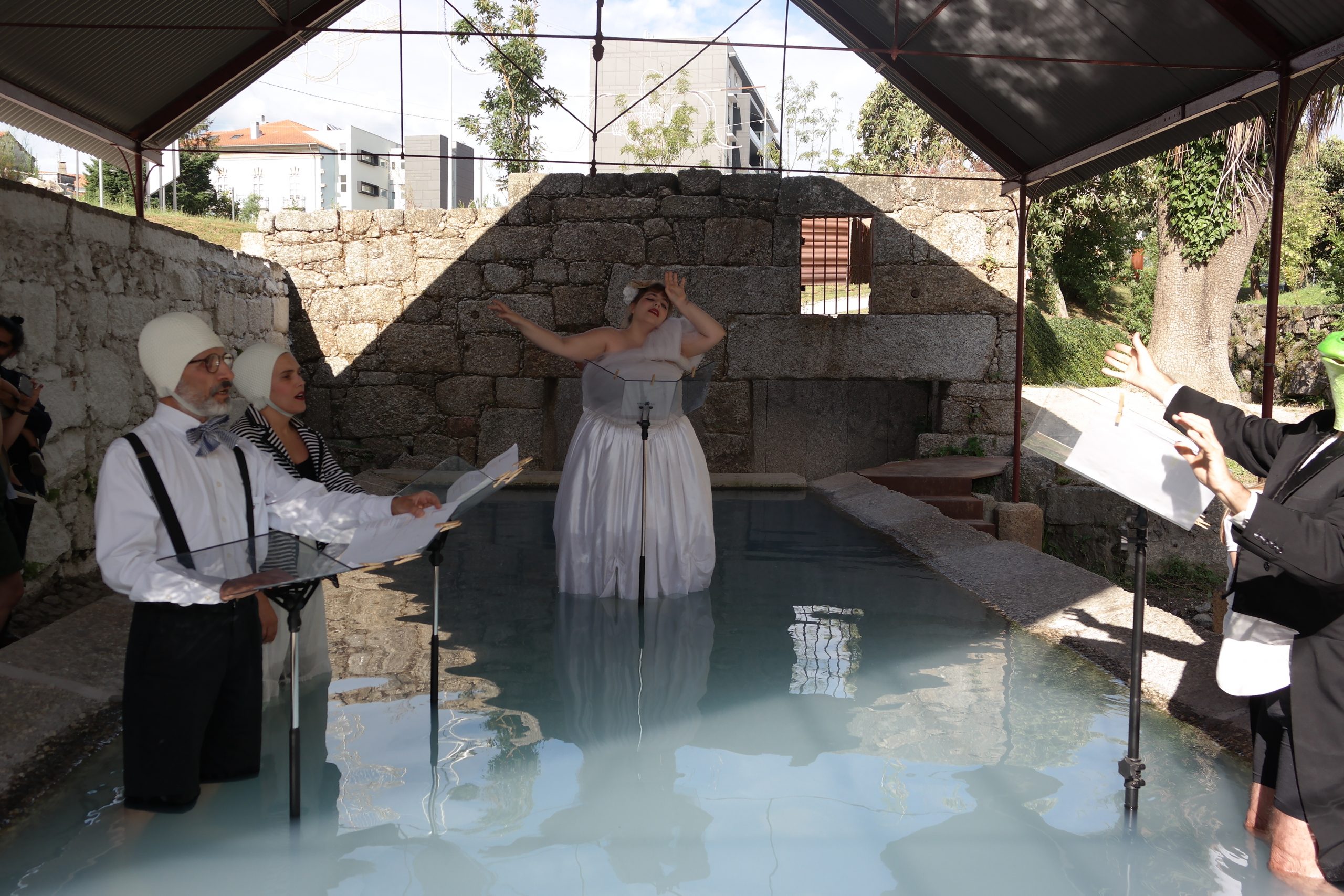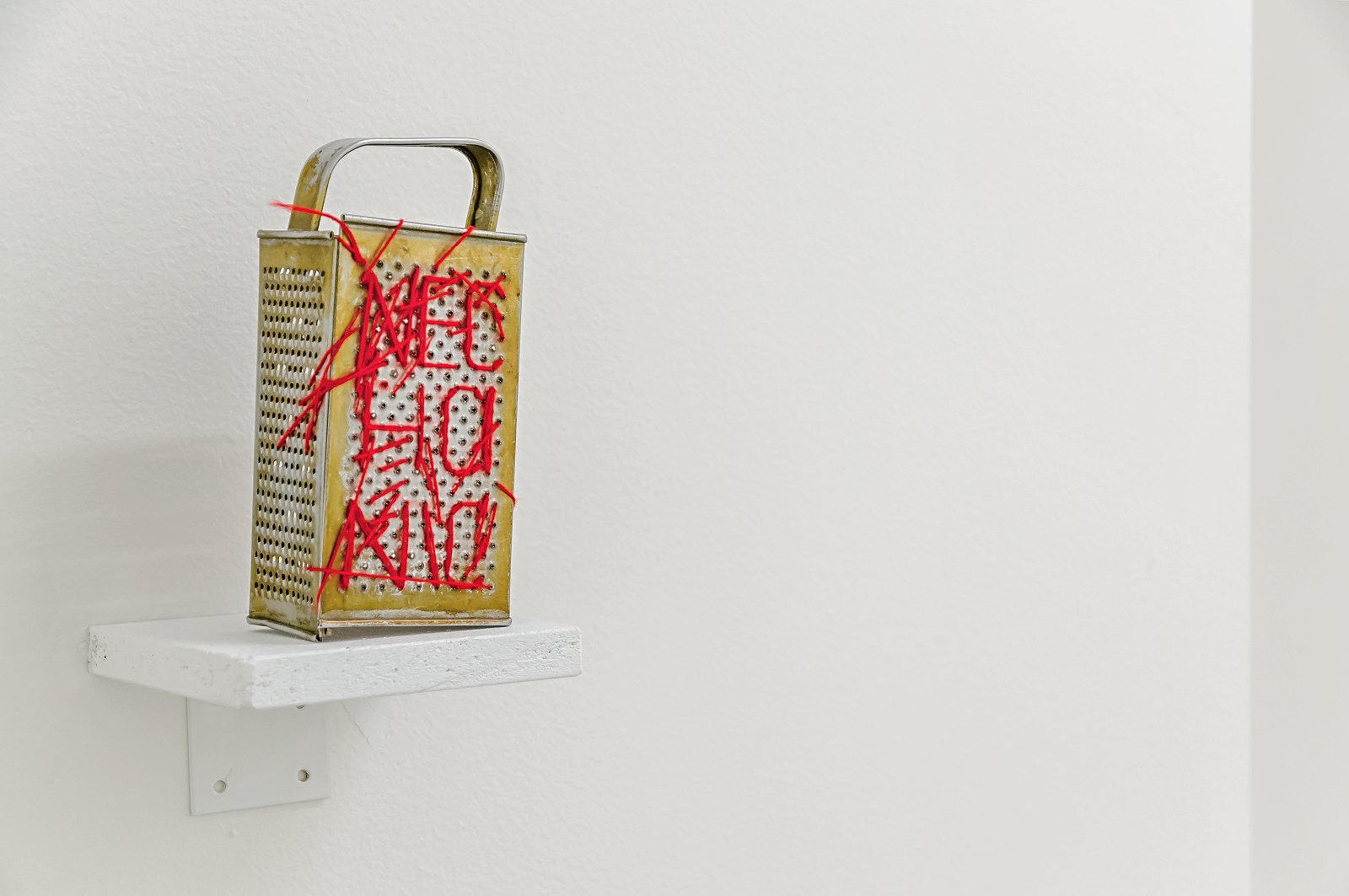It is not surprising that in the past 12 years – since Fidesz came into power – there has been certain artistic paradigms which are supported and favoured by the government. The artists from this “parallel” scene often exhibit in Salon-like exhibitions for example at Kunsthalle, which used to be a progressive contemporary exhibition space, but since 2010, it has been taken over by the Hungarian Art Academy, a conservative and retrograde art association. Or several other artists or craftsman appear at folklore or village festivals as well as local history museums. As every nationalistic-populist regime, the current one in Hungary also supports traditional and folk art: folk dance companies, artists working with “traditional” material, festivals promoting “original” Hungarian arts and crafts, battle re-enactments as well as living museums (skanzens) are receiving quite impressive funds. Many researchers ranging from anthropology to nationalism studies focus on a specific branch within this tendency, which are those festival, events and camps where not only these traditional crafts and activities, but pagan, pre-Christian rituals are being enacted. This events are linked more closely with the far-right parties in Hungary (formerly Jobbik, now Mi Hazánk – far right, Nazi parties whose main argument for example is to restore the pre-World War borders of Hungary) who share an interest with the so-called “ősmagyar”, in English proto-Hungarian traditions.
Margit Feischmidt’s book about new nationalistic tendencies describes the main goal for these festivities: to reinforce the lost identity of the community and find comfort in authenticity, and in a nostalgic past, which actually never happened that way.[1] Even though these events try to bring back traditional proto-Hungarian activities and imitate how life was in that period, they are more interested in a glorified version of the past and not a critical interpretation of it. As we don’t know a lot about the so-called proto-Hungarians, just that it was a hunter-gatherer tribe who occupied huge territories of the Carpathian Basin (Honfoglalás), much of the re-enactments and historical representation are actually becoming fiction. Creating this fictional, imaginary narrative of the past is of course unconscious – the organizers and participants of the events believe this how it really happened. That is what differentiates these historical re-creations or re-enactments from a contemporary, critical understanding of the past: the participants are not interested in uncovering hidden narratives or unresolved conflicts and traumas, but try to present a homogenous, master narrative about the origins of Hungary and the nation state. This is visible for example in the project From Fake Mountains to Faith by Szabolcs KissPál, whose research centres around the Treaty of Trianon and the current far-right, semi-military groups which are agonizing over the lost territories of Hungary. In KissPál’s project, in which he creates a fictional museum with objects and relics related to the period between the two world wars, contemporary gatherings are presented in the forms of documentary videos, shedding light on the cult-like practices of these communities, searching for an authentic, Hungarian identity.

Another interesting phenomenon is the parallel existence of the government’s emphasis on Hungary’s Christian-Catholic background and the far-right parties, – who also consider themselves conservative Christians – quest for the authentic, proto-Hungarian culture, often resulting in the re-discovery pre-Christian, paganistic belief-systems. It would be worth to also examine those artistic strategies which are dealing with notions related to Christianity, but in this essay I will focus on artistic practices which try to hijack the far-right’s narrative about proto-Hungarians and traditional belief-systems and present them through a contemporary, critical lens.
There are at the moment various artistic practices in Hungary, which wouldn’t allow neither the government nor the governmentally supported amateur and folk art groups, to appropriate the discourse around proto-Hungarian or animistic, ritualistic belief systems. Their way to hijack this narrative could be described as the following: they observe certain figures and characters from these ancient times and try to liberate it from the nationalistic-populist propaganda from Fidesz (NER) and far-right parties as Jobbik or Mi Hazánk. They would like to highlight: it is worth observing these ancient knowledges, as we could find inspirations and tactics worth reviewing in the present. Especially in these times of crisis: as many observed, the current interest in spirituality and magic is closely linked to the fact that many people don’t find comfort anymore in the objective, scientific understanding of the world.
Contemporary artist Gideon Horváth and theoretician Kata Dóra Kiss were interested in the following ideas when they started to work together on their project, With their Mouth the Spirits Speak, which took place as part of OFF-Biennale’s 3d edition in 2021. Their research based project was part of the exhibition ACCLIM! organized by xtro realm artist group (where Gideon Horváth is also a member) whose main goal was to present artworks which are working with freeing the imagination, fiction and speculative narratives in order to face the climate crisis in a resilient way. As they summarized it in their concept, “while modern sciences emphasise the dismantling of emotion-based or intuitive knowledge, the yearning to do away with the magic-free world lives on in diffusing esoteric and neo-pagan movements. It has thus become quite common to search for various forms of transcendent experience.”[2]
Thus in their project they focused on the figure of the shaman (in Hungarian: táltos), who, according to the Hungarian system-of-belief was able to go into a state of trance, where it was possible to reconcile the contradictions of the present and come up with solutions. The figure of the shaman came from Central-Asian mythology and the Hungarian tribes during the time of the previously mentioned Honfoglalás were also in line with that. During these rituals and the trance, the shaman who was considered as the “wise man” or magician of the tribe, went into an in-between state, breaking the boundaries between human and non-human, reality and magic, life and death. For the artists, the figure of the shaman was a symbol for “creating balance in the disrupted equilibrium between the individual and their environment”.[3] They wanted to liberate the figure of the shaman from the romanticized and conservative interpretations in which framework the current regime presented them.
However, their project is not an attempt to fully reconstruct the narrative of the shaman and pagan rituals, but to highlight certain motives through fragmented pieces. Showing only fragments is a gesture opposing the government’s totalizing narrative about the nation – they also highlight that it would be worth it to deepen our knowledge about these forgotten traditions. This is especially true regarding the leftist artistic community, who often do not even start to deal with these topics, because they associate everything which is folkloristic with the government’s cultural-political mission. Works such as Horváth’s and Kiss’s emancipate these narratives from their burden and try to highlight that in today’s chaotic world, a thorough interest in magic and spiritualism can actually feel very liberating.

Gideon Horváth’s sculptures made from beeswax (a very resilient and flexible material which the artist also uses in his other projects related to queer ecology) evoke certain objects and tools related to the practice of the shaman. The membrane of the shaman’s drum which he uses for going into the trance state, the skull of the magic steed which he rides on according to legends, appear as almost abstract forms: on one hand they are relics from the past, and on the other hand magical objects for a future use. The sensuous beeswax objects seem fluid and flexible; they might transform into something else. However, they appear on a glass “shelf” which creates a contrast: as a material, beeswax is more linked to the realm of magic and esoteric movements, and glass with its transparency and rigidity, to scientific world. Horváth’s work present how these two realms can and should interact with each other. The artist and the theorist also made interviews with Bence Horváth, journalist, Máté Csizmadia eco-psychologist and Ágnes Birtalan, orientalist which are contextualizing the research based artwork as well as Kata Kiss’s philosophical essay about the shamanic tradition. Thus their installation becomes a 3D mind map or a special constellation, consisting of artworks, text and moving images, all part of a bigger research based, collaborative project.
Another figure, who is at the moment in general very popular in contemporary art, is that of the witch. Not as closely related to the time of the Honfoglalás as the shaman, but witches and “wise women” (healers, midwifes, etc.) are also part of the Hungarian folklore. Interestingly enough, while the shaman was always considered as a wise man, whose mysterious powers are serving a greater good, witches and healers were often outcasts of the society, living on the margins. This community and their knowledge was oppressed since the time of Enlightenment – as Silvia Federici summarized it in her books[4], women with special abilities (healers, midwifes) were considered as evil witches, whose powers and knowledge is not aligned with that of the systems. Thus one can consider the witch trials and hunts as a systematic oppression against women, who were different.
Interestingly enough, there exists in Hungary (and also everywhere else in the world) a not so small community, who are considering themselves witches and practicing neo-pagan (and occult, esoteric) rituals. These communities find comfort in reaching back to the ancient times and to animistic belief-systems and they are often not interested in everyday politics or linked to political parties in any way. They are interested in our global (environmental, political, pandemic) crisis, not from a nationalistic perspective, but a more holistic one.
Noémi Szécsi, a young Hungarian photographer who just graduated from the Moholy-Nagy University of Applied Arts, started to research the figure of the contemporary witch. She used the strategy and research method of an anthropologist: she organized field trips to visit these women and their communities. While documenting their every days and rituals, she tried to maintain an objective, outsider perspective, yet at the same time she slowly became part of the community as she attended their meetings and rituals. Her series titled It couldn’t rain forever (2022) consists of portraits of the women who found comfort and a shelter in contemporary witchcraft which they consider as an eclectic belief-system, mixing various ancient religions and mythologies and in the process, creating their own. Also, many of these women were often abused and traumatized in the past and they felt that nothing in their life makes sense anymore. They needed a change and they found comfort not only by sharing their stories with each other but by acting as independent, emancipated women – in reference to Silvia Federici’s theory – for whom revisiting old rituals and understanding it from a present perspective could create a closer connection not only with themselves but their environment (nature). Noémi Szécsi’s series strongest point is that is not judging these women but it is also not glorifying the community (like it was a little bit the case with a previous diploma project from last year by photographer Eszter Asszonyi, where the line between the artist and the community blurred, as she was pretty much involved personally in the rituals). It shows the women in a documentary style photography, yet as they close their eyes or stare into the camera they carry a mystic aura: that they found something important and empowering for themselves.
The portraits are also mixed with still-lives which are depicting various rituals (how to understand dreams for example) but the artist doesn’t over explain these scenarios. She rather presents them as everyday situations which carry a strong meaning for the participants, yet for us it is more difficult to decipher. The third strong motive is that of the landscape: one can notice that several photos were taken in Transylvania, high in the mountains, whose eerie and majestic view shines through the photos. It is also ironic that this location where the artist was doing the research used to belong to Hungary and is part of the far-right discourse mentioned earlier: yet here, the question is not at all about national identity but something more universal, which goes beyond borders. Another strong point of the series was how it was installed during the university’s final exhibition: the artist created a multi-channel slide show from the photos. Every time the carousel clicked, a different set of photos appeared on the wall, which resulted in different photographic constellations. Depending on whether you saw at the same time a portrait, a still life with a ritualistic object or a landscape, different narratives would emerge, encouraging the visitor to imagine their own stories. Sometimes there was also a gap, an absent image, which made the flow of the portraits even more interesting as the hiatuses became part of the stories too. They referenced the silences, the untold stories, the taboos surrounding the community.
Community itself however is missing from the photographs of Szécsi which, according to her, was partly because she was interested in the individuals and wanted to capture them. However, it is always a question to what extend are these communities open and inviting for an external perspective, to be part of an “artistic project”. This was pretty much the case with Romanian artist, Virgina Lupu’s series (Tin tin tin), who documented the everyday rituals of a Roma witch community – her series is a strong statement on community, bonding and emancipation. However, going back to Hungary, it is worth to introduce Chloé Macary-Carney, a French artist, who spent 2 months in Hungary in 2021, as part of Budapest Gallery artist-in-residence program. Just like Noémi Szécsi and Eszter Asszonyi, she was interested in new age and neo-pagan communities, their eclectic belief systems and contemporary rituals.

However, Macary-Carney was not even Hungarian so she had an even bigger difficulty when observing these individuals and communities. She still managed to make interviews, talked with people who consider themselves witches and visited important locations (temples, private homes, personal collections). Yet she chose a very different medium than the previously mentioned artists: partly because of her background as an architect, she was most fascinated with the spaces which people in relation to witchcraft create or live in. These could be regular homes, research “centres”, house museums and safe spaces for women and marginalized communities. How can we create open and welcoming spaces – asks the artist, also when creating her long-term editorial project, Women Cave Collective (the title is a reference to so-called “men caves”.
Macary-Carney circulated around this topic for almost a year and had various iterations of it since last October: a pop-up exhibition with floor plan drawings and furniture made of cardboard, a collective patchwork made with Women Cave Collective and finally her solo show at Budapest Gallery which opened in the beginning of August, 2022. There she recreated a fictional office for an anthropologist, who, as the alter ego of the artists conducts this research around neo-pagan communities and the history of witchery in Hungary. Drawings, furnitures made by the artist (chairs like the special ritualistic “Luca chair”, working desks etc.) and a limited edition artist book makes the exhibition an open and welcoming space where the visitor is invited to sit down and read, and dwell into Macary-Carney’s world. The artist was also interested in the previously mentioned political appropriation and encountered several protagonists aligned with this narrative, but also many people, who are not associating themselves with it. With this in her mind, she tried to map out what it means to be involved in a spiritual community in Hungary in the early 2020’s and can it be separated from everyday politics. The previously mentioned works not only wish to liberate pre-Christian, folkloristic / animistic traditions from the conservative and far-right political party’s nationalistic narrative, but they also show an example to the oppositional, leftist artist community, that it is worth to revisit these thoughts and figures, as they can be understood as new kinds of survival strategies for the future.
[1] Margit Feischmidt: Nemzet a mindennapokban – Az újnacionalizmus populáris kultúrája – Az újnacionalizmus populáris kultúrája, L’Harmattan, Budapest, 2014
[2] Quote from the project’s website: https://aclim.hu/tevekenyseg/projektek/horvath-gideon-kiss-kata-dora-projektje/
[3] https://aclim.hu/tevekenyseg/projektek/horvath-gideon-kiss-kata-dora-projektje/
[4] See for example: Silvia Federici: Caliban and the Witch: Women, the Body and Primitive Accumulation, Autonomedia, New York, 2004.




